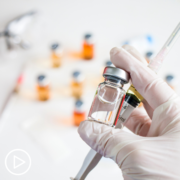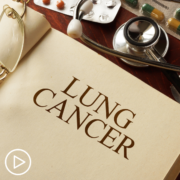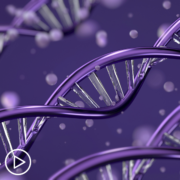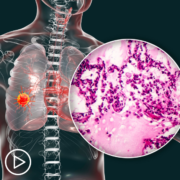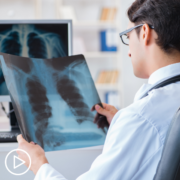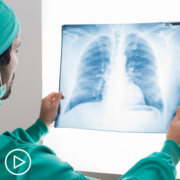What Patients Are Candidates for Immunotherapy in Lung Cancer Care?
What Patients Are Candidates for Immunotherapy in Lung Cancer Care? from Patient Empowerment Network on Vimeo.
What is the role for immunotherapy in lung cancer care? Dr. Lecia Sequist explains how immunotherapy works against lung cancer and other medical conditions that may increase risk for immunotherapy as treatment for certain patients.
Dr. Sequist is program director of Cancer Early Detection & Diagnostics at Massachusetts General Hospital and also The Landry Family Professor of Medicine at Harvard Medical School.
[ACT]IVATION TIP:
“…talk to your doctor about whether immune therapy is a possibility for treating your cancer. And if not, just ask why not. There are lots of good reasons why it may not be recommended, but just make sure that it’s been thought about and about whether it should be part of your treatment plan or not.”
Download Resource Guide en español
See More from [ACT]IVATED NSCLC
Related Resources:
Transcript:
Lisa Hatfield:
Dr. Sequist, is there a role for immunotherapy in lung cancer especially for newly diagnosed patients, or is that done more after a recurrence of lung cancer?
Dr. Lecia Sequist:
Yeah. There’s a big role for immunotherapy in lung cancer. Immunotherapy is a broad term. A lot of different drugs could fall into the category of being immune types of drugs. But in general, what this whole category of treatments is trying to do is to teach your body’s own immune system how to recognize the cancer and then be able to attack it. A lot of times when cancer develops, one of the ways that it’s been able to even go from one cell to a tumor that is visible or causing problems is that it’s been able to evade the immune system or sort of hide from your body’s immune system and pretend like it’s not there. And these newer immune treatments, they work in different ways. But essentially what they have in common is that they can rip off the camouflage, they can kind of expose the cancer to the immune system so that the immune system sees the cancer and starts attacking it like it should.
So there are lots of different ways that we can try to stimulate the immune system. And these drugs have gone in a short period of time from being something that was experimental and only given after everything else had failed, to now being given as soon as patients are diagnosed with lung cancer or even after a surgery. If a small tumor is taken out, sometimes we give immune therapy after a surgery or we give immunotherapy before a surgery in anticipation of it being taken out, trying to make the surgery easier or the results of the surgery even better. So immunotherapy has really changed a whole landscape of how lung cancer is treated, but immune therapy is not for everybody. So I know sometimes you might be reading on the Internet about a patient who had a really wonderful outcome with immunotherapy and you think, of course you think, well I want that drug, I want that outcome.
But there are some types of lung cancer that it doesn’t work well for. And there are some patients who might have a medical condition where the immune therapy could actually be dangerous for them. So there are a number of exceptions and not everybody should receive immune therapy. It depends on the type of cancer you have, the markers on the cancer, but also your medical background. And if you’ve had some medical conditions where the immune system is really active. Examples might be rheumatoid arthritis or Crohn’s disease, psoriasis. These are some of the common ones. But there’s a lot of different diseases that you might have had before you even had cancer where the immune treatment might be very risky for you or dangerous. So my activation tip is to talk to your doctor about whether immune therapy is a possibility for treating your cancer. And if not, just ask why not. There are lots of good reasons why it may not be recommended, but just make sure that it’s been thought about and about whether it should be part of your treatment plan or not.
Share Your Feedback:
Create your own user feedback survey


